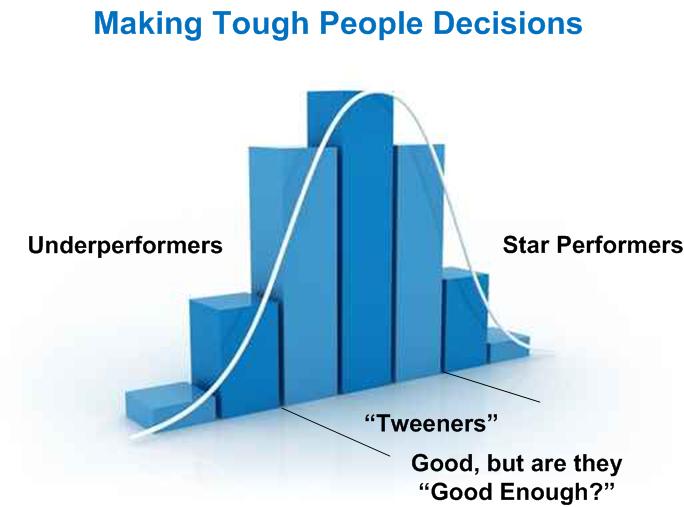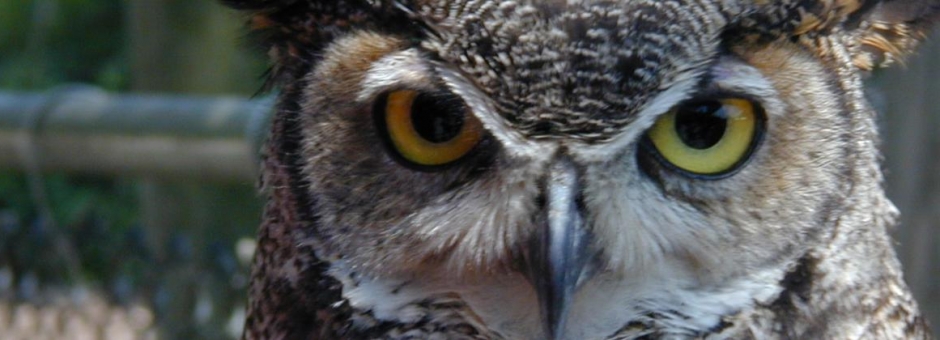Person-Job Fit Analysis for Key Roles Driving the Capabilities
Diagnostic 5: Making the Difficult People Decisions to Select and Confirm the Executive's Team
During Wave 1, the Star and Underperformers are relatively easy to identify. Many of the Stars may be used as a core executive team ("kitchen cabinet") until the entire team is fleshed out. Replacing the underperformers as soon as is possible is imperative.
The new executive typically uses the Immersion stage in particular to test his team's ability to develop a deep, unbiased understanding of the business, their ability to manage change, and their willingness to take a realistic and balanced view of their own strengths and weaknesses.

The most difficult decisions are about those team members (or their respective team members) who are "tweeners" - incumbents who are neither underperformers nor star performers. They are performers who may be good, but are they good enough to meet the demands of their role in driving a key organizational capability? Are they a significant contributor to the executive team which is attempting to lead the necessary changes for performance improvement?
Depending on the challenges the business or functional area faces as a result of where it is in the business maturity life cycle, another consideration is the complementary composition of the team. Do we have enough entrepreneurs pushing the boundaries of organic growth, joint ventures or alliances, or growth through acquisition? How do we compose a team that brings more discipline to growth (Unbridled Growth) so we are not pursuing unprofitable sales? Or, how to we renew growth or improve profitable market share in a mature product line or brand (Resting on Past Laurels) where we may have evolved into a culture of valuing our own accomplishments of the past or being otherwise inwardly focused?
There are multiple tools that can be used to build role-specific competency models as a basis for a person-job fit analysis for key roles. These competency models can help structure a facilitated discussion of a candidate's current demonstrated capabilities and the probability that he or she can stretch to perform the full profile of required competencies that will distinguish fully effective performance of new job demands.
Tough people decisions will also occur around the beginning of the Wave 2 changes. It becomes more obvious as the organizational shaping and change management processes are implemented that certain otherwise loyal and capable managers are not capable of leading change through the inevitable conflict and disruptions that result from change. Or, as the design of critical organizational capabilities become crystallized, it becomes clearer that a key job driving a specific organization capability requires the strong performance of a full set of distinguishing competencies that the incumbent manager has never exhibited previously and has not demonstrated recently when specifically given the opportunity and coaching to pursue the new behaviors.
An experienced executive coach can help the new executive identify the set of distinguishing competencies required of the new role, facilitate a person-job fit assessment in consultation with the new executive, and help the new executive select a top performing replacement candidate when replacement seems necessary and warranted. Once the new executive makes a more informed tough decision to replace an incumbent, and the new replacement who is flush with the required distinguishing competencies has had an opportunity to perform, the new executive often wonders why he or she did not make this change sooner.
On the opposite side of the coin, an experienced executive coach can also help a new executive appreciate valuable talent on the team that he or she might have otherwise overlooked. We all have personal biases and preferences that can distort our assessment of the strengths, weaknesses, and potential contributions of others. Given the opportunity, some people rise to the occasion and blossom under new leadership. And others, who we thought would readily stretch outside of their comfort zones, surprisingly choose to play it safe.
Assessing the likely contributions of the new executive's "tweener" team members will be critical during both the Immersion and Wave 2 stages.

Changing Out a "Tweener"
In the face of the business downturn in the wake of the most recent global recession, a new division president was trying to understand why cost cutting initiatives and efforts to rationalize the inventory of product parts in related parts of the matrix organization were persistently resistant to change. The senior finance executive on her team was a long-tenured employee who had worked his way up the ranks and was viewed as a solid performer and loyal. She asked him to use his network of finance and accounting colleagues to determine what was behind the resistance to change. She was privately expecting an initial answer in one week.
After two weeks of no reports back from the finance executive, she asked him for a status report. His initial report seemed to accept the status quo. He reported that the departments had their hands tied by dealer expectations for part availability. Managers he spoke with expressed concern that headcount reductions would damage morale and would not allow them to have the experienced bench strength needed when business volumes improved. Etc.
The President concluded after several attempts to redirect the finance executive that he had been successful in the past implementing existing plans during prosperous times. He lacked the aggression and constructive conflict management skills necessary to be helpful to the President during difficult times. He was reassigned and replaced.
Links to A Sample of Diagnostic Tools
5. Person-Job Fit Analysis for Key Roles Driving the Capabilities (Current Page)
###
Wiznami Corp. is an a senior executive coaching service based in Naples, Florida.

